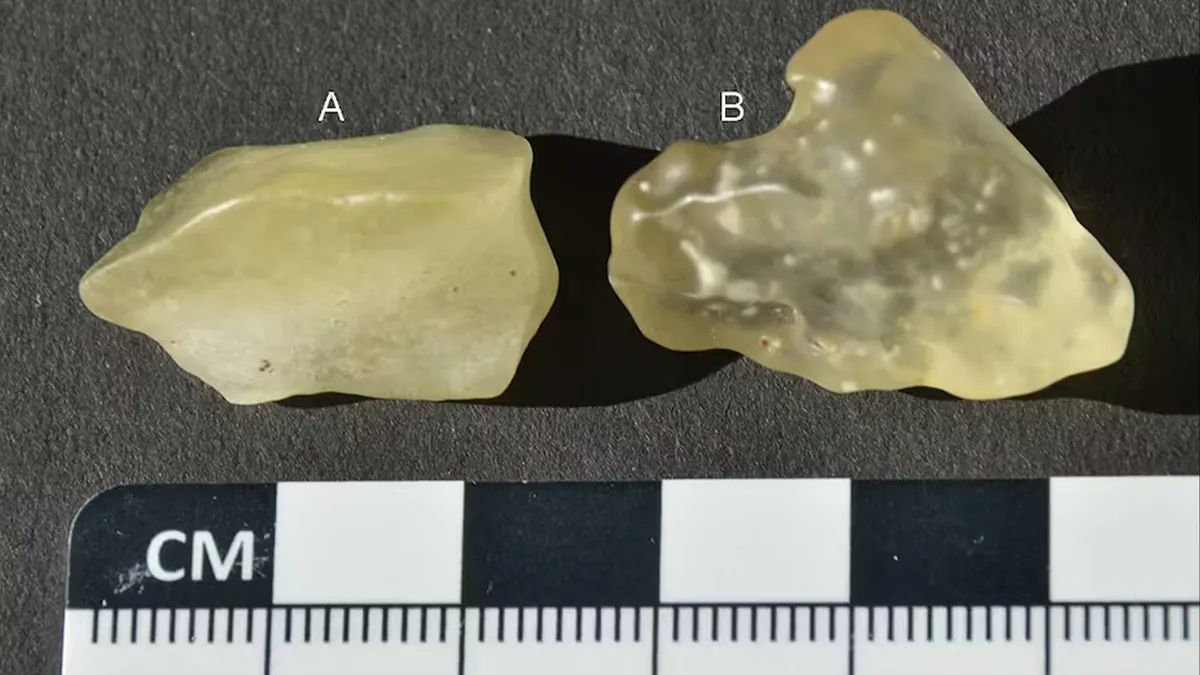
The Great Sand Sea is a 72,000 km desert between western Egypt and eastern Lybia in the Sahara. If you visit, you may be lucky enough to find a piece of bizarre yellow glass admire the samples above. A very unusual glass due to its high silica content, this rare kind of glass is valued by collectors and was part of a pendant found in King Tut’s tomb. But what are its origins?
“Some suggested it might be from volcanoes on the moon,” explains University of the Western Cape geologist Elizaveta Kovaleva in Live Science. “Others suggest it’s the product of lightning strikes (“fulgurites” – glass that forms from fusion of sand and soil where they are hit by lightning). Other theories suggest it’s the result of sedimentary or hydrothermal processes; caused by a massive explosion of a meteor in the air; or that it came from a nearby meteorite crater.”
Now, Kovaleva and colleagues have determined that the glass is indeed from a meteorite impact. After examining the glass using transmission electron microscopy, the researchers found minerals that form at a pressure so incredibly high that the “conditions can only be obtained in the Earth’s crust by a meteorite impact or the explosion of an atomic bomb.”
There’s a new mystery to overcome though. There’s no appropriately-sized crater nearby that could be the impact site of a meteorite that could have produced the glass.
“Where is the parental crater?” Kovaleva asks. “How big is it – and where is it? Could it have been eroded, deformed or covered by sand? More investigations will be required, likely in the form of remote sensing studies coupled with geophysics.”

